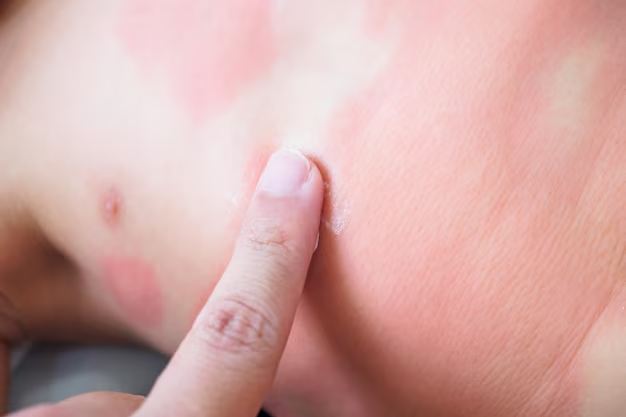Understanding Lymphoma: What It Looks Like, Symptoms, and What Comes Next
When faced with the prospect of a serious illness like lymphoma, many questions arise. Among them is the critical question: What does lymphoma look like? If you're grappling with concerns about lymphoma, this article aims to shed light on this complex disease by providing you with a clear overview of the signs, symptoms, and steps you might consider taking next.
What is Lymphoma?
Lymphoma is a type of cancer that affects the lymphatic system, which is part of the body's immune system. This network of vessels and nodes is integral in transporting lymph fluid, nutrients, and waste material between the body's tissues and the bloodstream. There are two primary types of lymphoma: Hodgkin lymphoma and Non-Hodgkin lymphoma. Both affect lymphocytes, a type of white blood cell, though they exhibit distinct characteristics and spread differently within the body.
Recognizing Lymphoma Symptoms
Swollen Lymph Nodes
One of the hallmark signs of lymphoma is swollen or enlarged lymph nodes, which might be visible and palpable as lumps under the skin. Common areas where these nodes may swell include:
- Neck
- Armpit
- Groin
These swollen nodes are typically painless, although some people might experience tenderness.
Systemic Symptoms
Beyond swollen lymph nodes, lymphoma can present with systemic or "B symptoms," which can include:
- Fever: Unexplained fevers that might come and go
- Night Sweats: Profuse sweating at night, often soaking clothes and beddings
- Weight Loss: Unexplained loss of more than 10% body weight within six months
Additional Symptoms
- Fatigue: Persistent tiredness that doesn’t improve with rest
- Itching: Widespread itching without a rash
- Loss of Appetite: Reduced interest in eating
- Shortness of Breath: Particularly if the lymphoma affects the chest
The Appearance of Skin Lymphoma
In rare cases where lymphoma presents in the skin (cutaneous lymphoma), symptoms might include:
- Reddish or purplish patches or nodules on the skin
- Scaly or itchy skin
- Areas that resemble eczema or psoriasis but don't respond to typical treatments
Types of Lymphoma
Hodgkin Lymphoma
Characterized by the presence of Reed-Sternberg cells, Hodgkin lymphoma is known for its predictable pattern of spread. It often begins in the upper body, such as the neck or chest.
Non-Hodgkin Lymphoma
This type includes a vast array of lymphomas that don’t fit the Hodgkin category. Subtypes can behave differently, ranging from aggressive to indolent (slow-growing).
When to Seek Medical Advice
If you notice persistent symptoms such as swollen lymph nodes that do not diminish over a few weeks, or if you experience systemic symptoms like night sweats or unexplained weight loss, consulting a healthcare provider is essential. While such symptoms don't always indicate lymphoma, they warrant a professional evaluation.
Diagnostic Approaches
Blood Tests
Blood tests can provide vital clues about your overall health, signaling potential issues that might require further exploration.
Imaging Tests
- CT Scans: Helps in identifying enlarged lymph nodes or organs
- PET Scans: Detects areas of increased metabolic activity, typical of cancerous cells
Biopsy
To definitively diagnose lymphoma, a biopsy of the lymph node or suspected tissue is performed. Pathologists examine the samples for cancerous cells, confirming the presence and type of lymphoma.
Navigating Your Diagnosis
Understanding Staging
Understanding the stage of lymphoma is critical as it outlines how far the cancer has spread in the body and helps guide treatment decisions. Lymphoma is typically staged I through IV, based on:
- Extent of involvement
- Number of affected lymph node areas
- Presence in organs outside the lymphatic system
Treatment Options
Treatment plans depend on the type and stage of lymphoma but generally may include:
- Chemotherapy: Uses drugs to kill cancer cells or stop their growth
- Radiation Therapy: Involves the use of high-energy rays to target and destroy cancer cells
- Immunotherapy: Employs the immune system to target and combat lymphoma cells
- Targeted Therapy: Focuses on specific molecules involved in cancer cell growth
Living with Lymphoma
For those diagnosed, supportive care and lifestyle adjustments can improve quality of life. Here are some practical steps:
- Nutrition and Exercise: Maintaining a balanced diet and regular physical activity, tailored to your energy levels, can help.
- Support Networks: Joining support groups and engaging with counseling services can be beneficial.
- Regular Check-Ups: Ongoing medical follow-up is important for monitoring your health status and managing treatment side effects.
Aligning Your Information with Practical Insights
Navigating lymphoma, whether through recognizing symptoms or understanding diagnostic and treatment pathways, can feel overwhelming. However, being informed empowers you to make informed decisions and engage with healthcare providers effectively. While this article provides a vital overview of lymphoma and what it might look like, personal health concerns should always be discussed with a qualified health professional.
Key Takeaways 📝
- Swollen Nodes: Look for lumps in the neck, armpits, and groin.
- Common Symptoms: Fatigue, unexplained fever, weight loss, night sweats.
- Immediate Action: Seek medical advice if symptoms persist or if there are systemic signs.
- Diagnosis: Involves various tests, most definitively a biopsy.
- Treatment Options: Chemotherapy, radiation, targeted and immunotherapies.
- Lifestyle Tips: Nutrition, exercise, and support networks can aid quality of life.
- Regular Monitoring: Ongoing follow-ups are essential for managing health post-diagnosis.
Remember, while this guide is comprehensive, individual medical advice and treatment should always come from healthcare professionals. Keep informed, stay proactive, and prioritize communication with your medical team. 🩺💪
